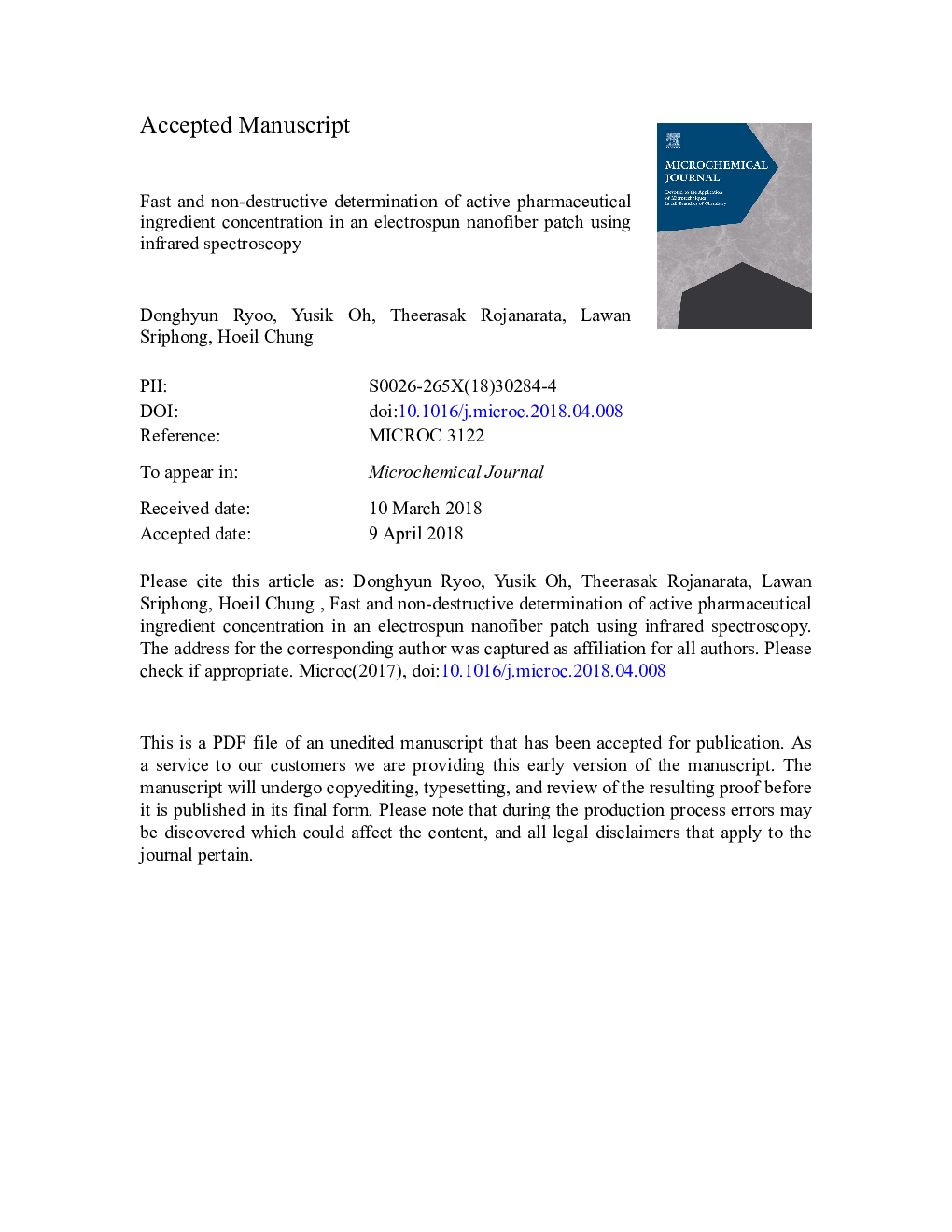| Article ID | Journal | Published Year | Pages | File Type |
|---|---|---|---|---|
| 7640627 | Microchemical Journal | 2018 | 23 Pages |
Abstract
Infrared (IR) spectroscopy has been successfully utilized to non-destructively determine the concentration of α-arbutin (ABT) loaded on cellulose acetate (CA) electrospun-nanofiber patches. Initially, the homogeneity of the ABT distribution over the CA nanofiber mat, which would directly influence the sample representation of the acquired transmission IR spectra, was evaluated. IR microscopic mapping performed on the 3.0â¯wt% ABT sample covering an area of 800â¯Ãâ¯800â¯Î¼m2 revealed that ABT concentrations were moderately homogeneous (relative standard deviation: 3.3%). Another issue to consider for accurate analysis is the potential thickness variation from sample to sample, which makes the ABT peak intensity considerably less concentration-representative. The absolute amount of loaded ABT varies depending on the thickness of the nanofibers, thereby causing the intensity of the ABT peak to fluctuate. To resolve this problem, a method involving the peak area ratio between the ABT and CA band was used. When the IR sampling area was 800â¯Ãâ¯800â¯Î¼m2, the correlation between the ABT concentration (1.5-4.8â¯wt%) and the peak area ratio was linear, but the accuracy was not sufficient. Increasing the sampling area to 4â¯Ãâ¯4â¯mm2 yielded better accuracy with a standard error of prediction (SEP) of 0.10â¯wt%. The acquisition of more concentration-representative sample spectra with wide area coverage was attributed to accurate concentration determination. In addition, the potential of utilizing near-infrared (NIR) and Raman spectroscopy for the same analysis was evaluated and discussed.
Related Topics
Physical Sciences and Engineering
Chemistry
Analytical Chemistry
Authors
Donghyun Ryoo, Yusik Oh, Theerasak Rojanarata, Lawan Sriphong, Hoeil Chung,
